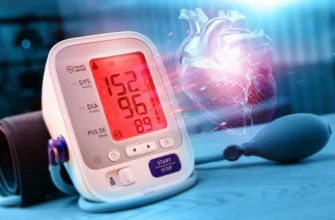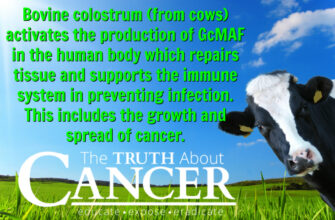For too long, our understanding of heart health and aging has often been tied to a single, oversimplified metric: the number on the scale or the Body Mass Index (BMI). While maintaining a healthy weight is undoubtedly crucial, new research from the UK Biobank is prompting a significant re-evaluation. It turns out that the true arbiter of your heart`s youthfulness isn`t merely the *quantity* of fat you possess, but precisely where that fat decides to take up residence within your body.
The Stealthy Saboteurs: Visceral and Ectopic Fats
Imagine your body`s fat reserves not as a monolithic blob, but as a series of distinct neighborhoods. Some fat, known as subcutaneous fat, comfortably settles just beneath your skin, often visible on your hips, thighs, and buttocks. This type of fat, while perhaps a cosmetic concern for some, is generally considered metabolically less active and, in certain contexts, even somewhat protective.
Then there are the less benign, often unseen residents: visceral fat, which wraps itself around your vital internal organs deep within the abdominal cavity, and ectopic fats, which brazenly infiltrate tissues where fat has no business being, such as your liver and muscles. These internal interlopers, out of sight and often out of mind, have now been spotlighted as potent accelerators of cardiovascular aging.
A comprehensive study, meticulously analyzing data from over 21,000 UK Biobank participants and leveraging advanced machine learning, has drawn a stark connection between these specific fat locations and an individual`s “cardiac age.” This `cardiac age` isn`t just your birth certificate age; it`s a sophisticated measure of how old your heart and vascular system *truly* function, often revealing a stark difference from your chronological years.
“The body`s internal geography of fat storage is a far more precise indicator of cardiovascular risk than a simple number on a scale. It`s a sophisticated update to our health playbook, urging us to look beyond BMI.”
Why Are These Fats So Problematic?
- Metabolic Mayhem: Visceral fat isn`t merely inert storage; it`s a bustling metabolic hub, actively churning out inflammatory compounds and hormones. These substances can disrupt normal bodily functions, paving the way for insulin resistance, elevated blood pressure, and unfavorable cholesterol profiles – all notorious architects of heart disease.
- Organ Overload: When fat infiltrates the liver (a condition known as hepatic steatosis or fatty liver disease), it can impair its critical detoxification and metabolic functions. Similarly, fat nestled within muscle tissue can diminish insulin sensitivity, exacerbating metabolic stress. It`s akin to having uninvited guests set up camp in your essential operating rooms.
The Curious Case of Sex-Specific Fat Distribution
One of the most compelling revelations from this research is the pronounced difference in how fat distribution impacts men and women. For men, a higher accumulation of abdominal fat (the classic “beer gut”) and even fat deposits in the lower torso were unequivocally linked to an accelerated pace of cardiovascular aging. This finding largely aligns with existing knowledge regarding the dangers of central obesity in males.
However, for women, the narrative takes an intriguing turn. While visceral and ectopic fats remained universally detrimental, the study uncovered a remarkable protective effect from fat predominantly distributed in the hips and buttocks (the classic “pear shape”). This gluteofemoral fat, often a source of cosmetic concern, appears to act as a buffer, shielding women from the relentless march of cardiovascular time. Researchers hypothesize that this could be due to differences in hormonal profiles, the unique biological properties of fat cells in these regions, or even distinct metabolic activities that mitigate systemic inflammation.
This insight elegantly underscores a fundamental truth: not all fat is created equal, nor does it behave identically in every individual. What might be a relatively benign or even beneficial fat deposit for one person could signal a critical health warning for another, depending on their sex and overall metabolic context.
Beyond the Scale: A New Metric for Longevity
This groundbreaking research signals a significant paradigm shift in how we might approach preventative cardiovascular health. It firmly suggests that relying solely on simplistic metrics like BMI, while convenient for population-level studies, is an oversimplification for individual risk assessment. Instead, a more granular understanding of an individual`s specific fat composition and where it`s stored could offer a far more accurate and personalized assessment of their true cardiovascular risk and biological age.
While advanced imaging techniques like MRI are currently the most precise methods for measuring these nuanced fat deposits, the implications for future personalized medicine are profound. Imagine a future where health assessments go beyond generic advice, offering tailored strategies based on your unique internal fat landscape, guiding you towards more effective interventions long before symptoms manifest.
What This Means for You (and Your Heart)
So, what actionable insights can we glean from this sophisticated science? It`s not about fixating on every contour, but rather embracing a holistic understanding that a truly healthy lifestyle is the most powerful antidote. This research emphatically reinforces the importance of:
- Thoughtful Nutrition: Prioritize a diet rich in whole, unprocessed foods, lean proteins, and beneficial fats, while consciously limiting refined sugars and ultra-processed items. Such an approach can actively help reduce the accumulation of harmful visceral and ectopic fats.
- Consistent Physical Activity: Exercise, especially a combination of cardiovascular and strength training, is remarkably effective at targeting visceral fat. It doesn`t just burn calories; it actively re-sculpts your internal fat profile, promoting a healthier metabolic environment.
- Stress Resilience & Quality Sleep: Chronic psychological stress and inadequate sleep are increasingly recognized as contributors to visceral fat accumulation, adding another insidious layer to the complex puzzle of long-term heart health. Prioritizing mental well-being and restorative sleep is not just a luxury, but a necessity.
Ultimately, this study serves as a compelling reminder that the human body is an intricate, dynamic system. Our journey towards optimal health demands a more sophisticated map than just weight and height. By shifting our focus to the quality and *location* of our fat, we equip ourselves with a more potent tool in the perennial quest for a younger, more resilient heart, defying the conventional wisdom one fat cell at a time.








